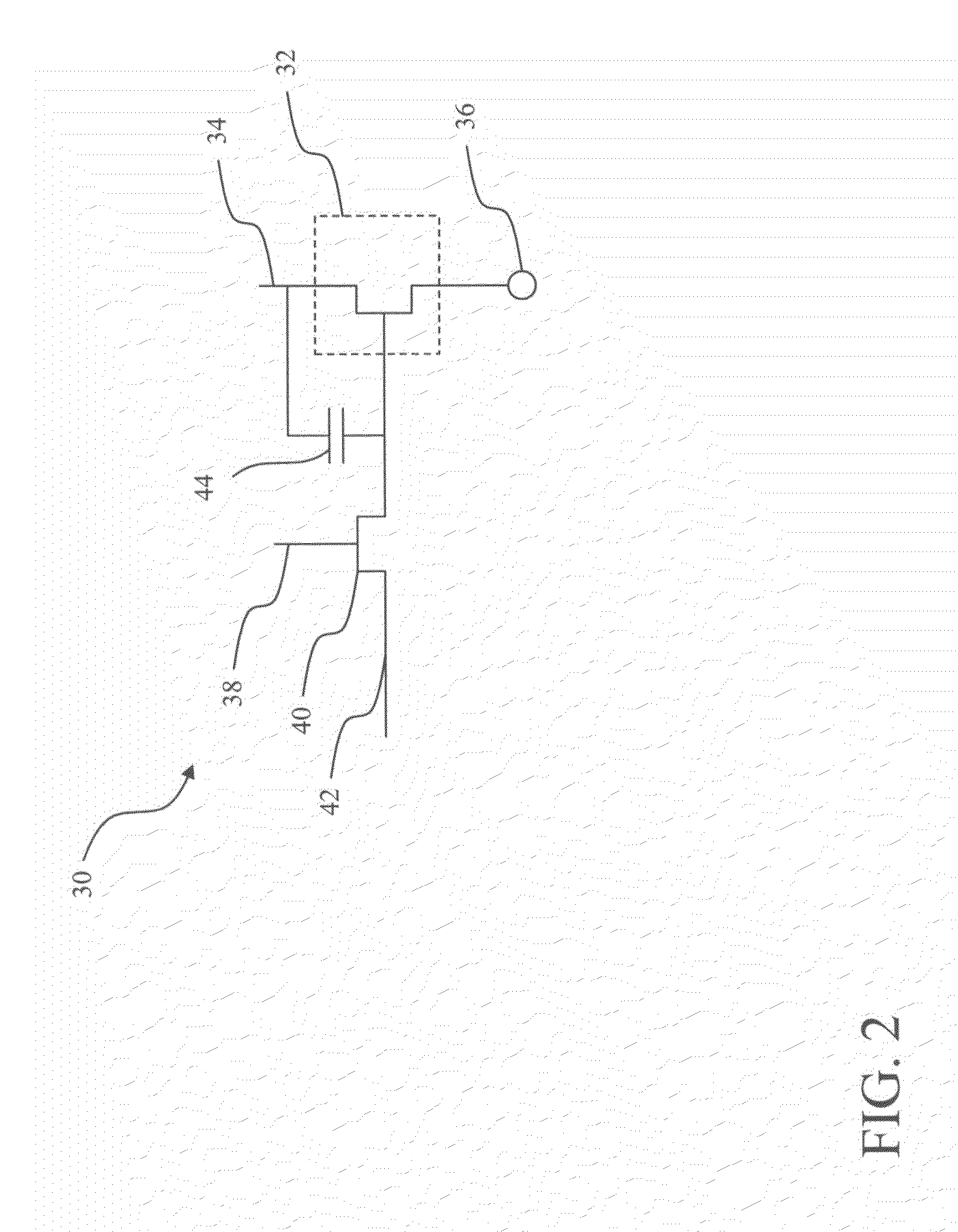Active matrix electroluminescent display with segmented electrode
a technology of active matrix and segmented electrodes, applied in the field of active matrix electroluminescent (el) display, can solve the problems of inability to independently control the current to each element of either electrode, significant power loss, and limited practicality of passive matrix el displays, so as to improve the effective resolution of active-matrix electroluminescent display and reduce the power consumption of the display
- Summary
- Abstract
- Description
- Claims
- Application Information
AI Technical Summary
Benefits of technology
Problems solved by technology
Method used
Image
Examples
Embodiment Construction
[0025]The present invention provides an electroluminescent (EL) display having a larger number of individually-addressable light-emitting elements than the number of active-matrix circuits for providing current to each individual light-emitting element.
[0026]The present invention provides an active-matrix electroluminescent display. This active-matrix electroluminescent display includes a display panel 2, a portion of which is shown in FIG. 1. This display panel 2 includes a display substrate 4. At least a first electrode 6 is disposed over an area of the display substrate 4. Two or more individually-addressable, second electrodes 8, 10 are further disposed over the display substrate 4 and the first electrode 6. An electroluminescent light-emitting layer 12 is formed between and in electrical contact with the first 6 and each of the second 8, 10 electrodes, so that first and second active areas 14, 16 are defined where the first electrode 6 and each respective second electrode 8, 10...
PUM
 Login to View More
Login to View More Abstract
Description
Claims
Application Information
 Login to View More
Login to View More - R&D
- Intellectual Property
- Life Sciences
- Materials
- Tech Scout
- Unparalleled Data Quality
- Higher Quality Content
- 60% Fewer Hallucinations
Browse by: Latest US Patents, China's latest patents, Technical Efficacy Thesaurus, Application Domain, Technology Topic, Popular Technical Reports.
© 2025 PatSnap. All rights reserved.Legal|Privacy policy|Modern Slavery Act Transparency Statement|Sitemap|About US| Contact US: help@patsnap.com



